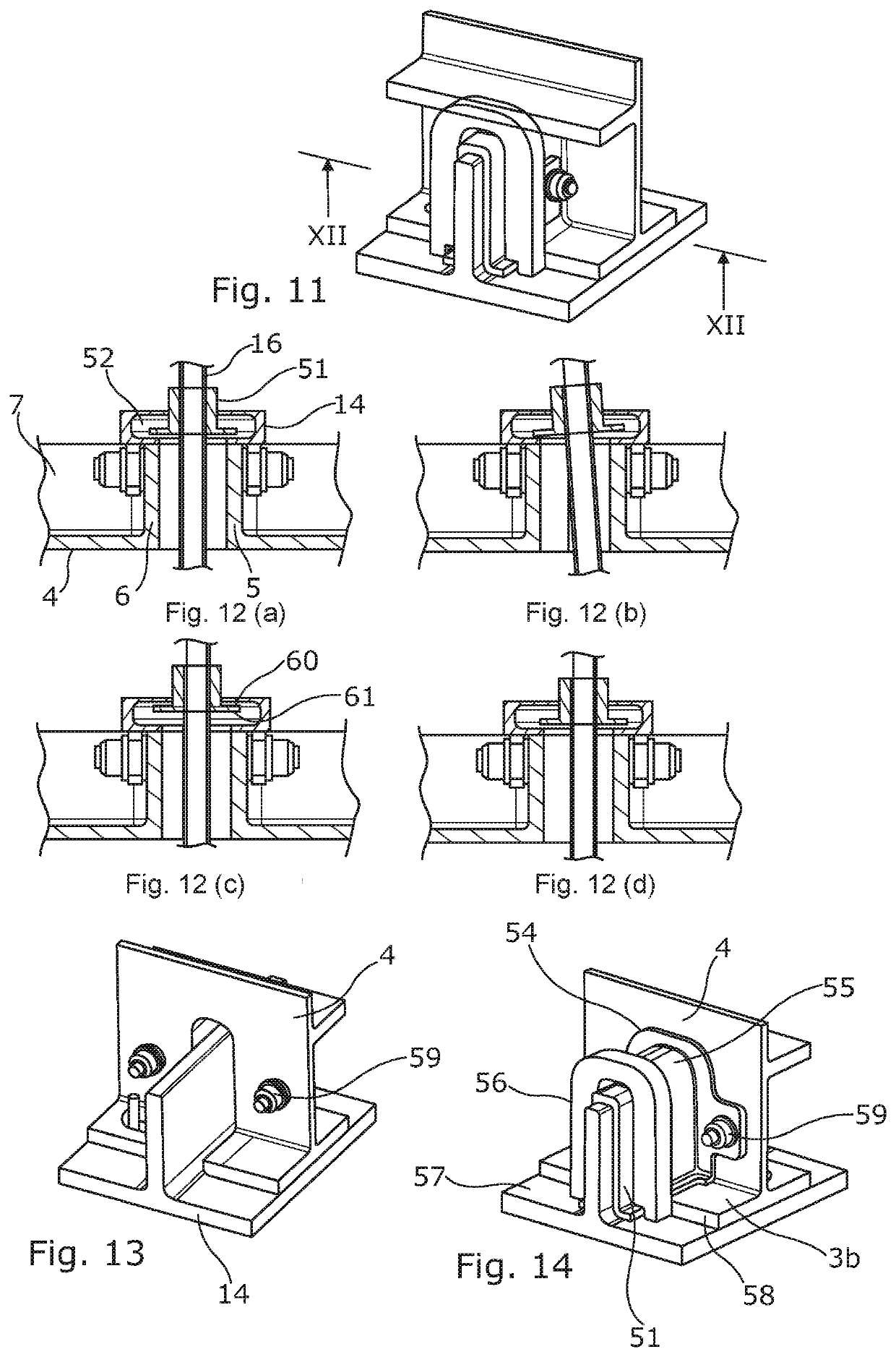Aircraft fuel tank aperture sealing
a technology for aircraft fuel tanks and apertures, which is applied in mechanical equipment, transportation and packaging, and spars/stringers, etc. it can solve the problems of causing unwanted drilling swarfs, complicated procedures, and requiring the assembly of seal plates with the wings, and achieves the effect of easy sealing
- Summary
- Abstract
- Description
- Claims
- Application Information
AI Technical Summary
Benefits of technology
Problems solved by technology
Method used
Image
Examples
Embodiment Construction
[0059]For ease of understanding, like reference numerals will be used for equivalent features in the drawings. With reference to FIG. 15, according to the prior art and showing the general arrangement of an aircraft wing, a wing lower cover 62 is shown, braced by stringers 14 and ribs 1. Not shown are an upper cover which will be attached to upper edges 63 of the ribs 1 and front and rear spars which will be attached to forward and rear edges of the ribs, respectively. The ribs 1 define “mousehole” apertures 2 therein. The ribs are made of metal but may be made of carbon fibre reinforced composite material. The ribs 1 have rib feet 3a, 3b, and upstanding webs 4.
[0060]In FIG. 1, according to the invention, a rib 1 has similar features to those shown in FIG. 15, and in addition two vertical braces 5, 6 and a horizontal brace 7.
[0061]Surrounding the aperture 2 is a first seal part in the form of a seal plate 8. The seal plate 8 is here made of fibre reinforced composite material and ha...
PUM
 Login to View More
Login to View More Abstract
Description
Claims
Application Information
 Login to View More
Login to View More - R&D
- Intellectual Property
- Life Sciences
- Materials
- Tech Scout
- Unparalleled Data Quality
- Higher Quality Content
- 60% Fewer Hallucinations
Browse by: Latest US Patents, China's latest patents, Technical Efficacy Thesaurus, Application Domain, Technology Topic, Popular Technical Reports.
© 2025 PatSnap. All rights reserved.Legal|Privacy policy|Modern Slavery Act Transparency Statement|Sitemap|About US| Contact US: help@patsnap.com



